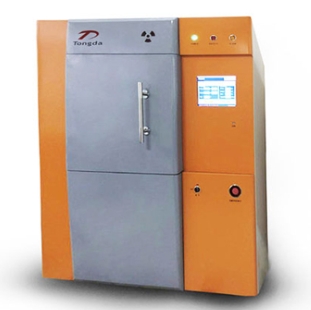
The 'AI microscope' of the microscopic world
2025-05-23 14:59X-ray irradiator is a scientific research equipment that uses X-rays to irradiate biological samples, materials, or small animals, and is widely used in fields such as biology, medicine, and materials science.
1. Core functions and technical principles of X-ray irradiation equipment
(1) Functional positioning
Biological research: used for DNA damage, cell mutagenesis, stem cell differentiation induction, tumor mechanism research, immunology and gene therapy experiments, etc.
Medical applications: radiation disinfection, blood product processing, analysis of tumor cell apoptosis, pre-treatment for organ transplantation, etc.
Materials and Environmental Science: Nanomaterial Modification, Food Radiation Quarantine, Soil Pollutant Analysis, etc.
(2) Technical principles
By accelerating electrons with high voltage to collide with metal targets, X-rays are generated; After optimization through filters, beam limiting devices, etc., the sample is irradiated to achieve targeted intervention by precisely controlling the dose rate, irradiation time, and range.
2. Key technical parameters of X-ray irradiation equipment
(1) Radiation performance
Tube voltage: 30-225kV (different models vary).
Dose rate: 0.1-16Gy/minute, supporting precise and stepless adjustment.
Dose uniformity: ≥ 95% (industry-leading level).
Radiation angle and coverage area: The maximum radiation angle is 40 degrees, and the coverage diameter is up to 30cm.
(2) Operation and Safety Design
Intelligent control: touch screen operation interface, data export function (compatible with Excel).
Safety protection: lead shielded cabinet, environmental dose<20 μ R/h (5cm away from equipment), multiple interlocks and fault alarms.
Cooling system: Closed loop cooling technology extends the lifespan of X-ray tubes (up to 2000 hours).
(3) Applicable sample types
Cells, tissue organs, bacteria, mice, rats, etc., support irradiation of small animals in a conscious or anesthetized state.
3.Typical products and manufacturers of X-ray irradiation equipment
Domestic representative: Dandong Tongda Technology Co., Ltd
Advantages: Localization reduces procurement costs, simplifies operations (without the need for complex X-ray knowledge), and meets national safety standards.
4. Expansion of application fields for X-ray irradiation equipment
(1) Biology and Medicine
Cell research: inducing gene mutations, cell cycle regulation, signal transduction analysis.
Tumor research: irradiation of tumor cell models to explore apoptosis mechanisms or radiation sensitivity.
Preclinical studies: Whole body irradiation of small animals (such as mice) for research on hematopoietic system, immune response, etc.
(2) Materials and Environmental Science
Nanomaterial modification: changing the crystal structure or surface properties of materials through irradiation.
Food quarantine: Non destructive detection of foreign objects, residual preservatives, or microbial inactivation.
Nuclear waste disposal: Assist in analyzing the distribution of radioactive materials to ensure safe disposal.
(3) Agriculture and Breeding
Mutation breeding: Irradiating plant seeds or insects to accelerate gene mutations and screen for superior traits.
5. Development trends and challenges of X-ray irradiation equipment
(1) Technical upgrade direction
Intelligence: Combining AI algorithms to optimize dose distribution and experimental design.
Safety: Reduce environmental radiation leakage and improve protection standards.
Multi functional integration: such as integrating CT imaging and irradiation functions to achieve "detection processing" integration.
(2) Industry challenges
High precision dose control and stability require continuous optimization. More basic data is needed to support the differences in radiation sensitivity among biological samples.
Overall, X-ray irradiation equipment is an indispensable tool in scientific research and industry. The X-ray irradiation equipment produced by Dandong Tongda Technology Co., Ltd. achieves a balance between performance and cost and is widely used in multiple fields. In the future, with technological iteration, its application scope will further expand to cutting-edge directions such as precision medicine and new material research and development.

